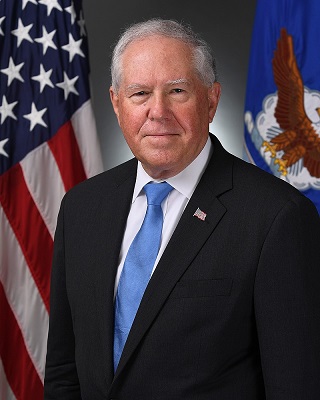The Air Force is betting a large part of its future air warfare on a fleet more than 1,000 autonomously operated drones, and later this spring its top civilian leader plans to climb into an artificial intelligence-operated warplane and let it take him airborne.
Air Force Secretary Frank Kendall ’71 told senators on April 9, 2024, at a hearing on the service’s 2025 budget that he will enter the cockpit of one of the F-16s that the service has converted for drone flight to see for himself how the AI-controlled plane performs in the air.
“There will be a pilot with me who will just be watching, as I will be, as the autonomous technology works,” Kendall told the Senate Appropriations Committee defense panel members. “Hopefully neither he or I will be needed to fly the airplane.”
Drone warfare has quickly expanded from the sidelines of combat to one of its primary weapons. Drones are a daily threat in Ukraine and in the Middle East. In Ukraine, everyday citizens are targeted by Russian drones but also are assembling drones to collect video of Russian positions. In the Middle East, Iranian-backed Houthis and militant groups have regularly employed sophisticated air, sea and underwater drones to target U.S. bases and commercial ships in the Red Sea.




